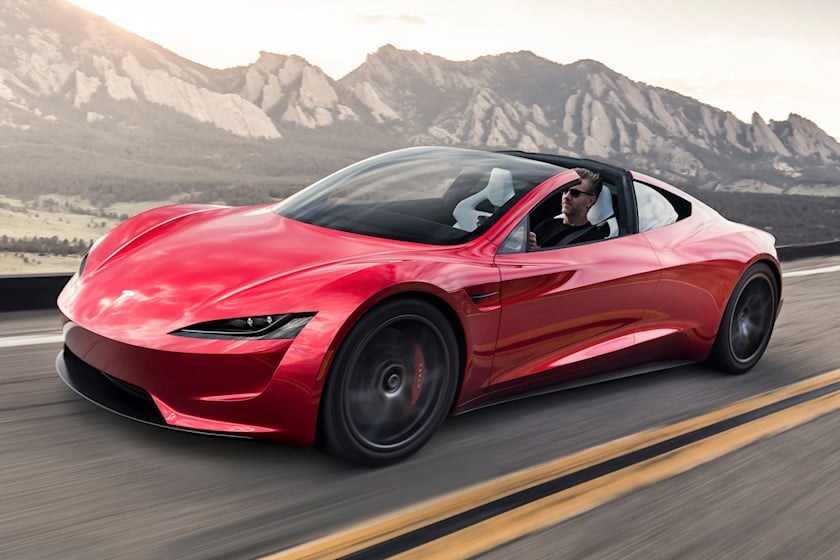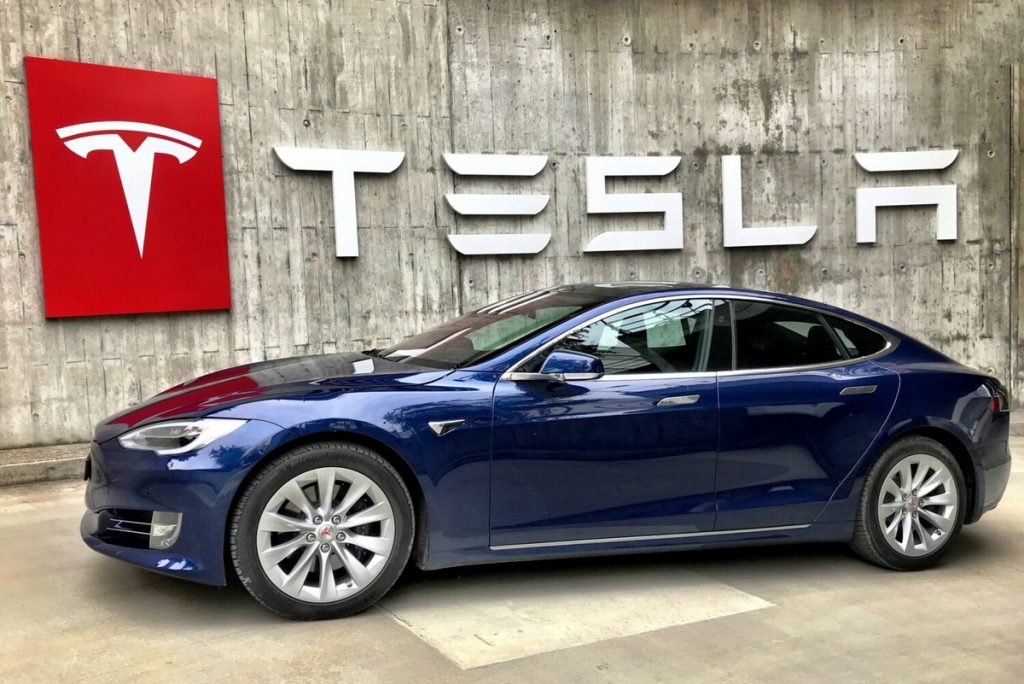The Marketing mix of Tesla analyses the 4Ps of Tesla, including the Product, Price, Place, and Promotions. The Tesla marketing mix framework focuses on strategies to ensure customer loyalty and boost the company’s visibility in major metropolitan markets. Tesla makes electric vehicles and is promoting the concept of sustainable energy with clean electric power solutions. The electric automaker exercises total control over the supply chain to guarantee the best customer experience.
Tesla’s marketing strategy focuses aggressively on Tesla’s marketing mix elements like product innovation, fully electric vehicles, electrical hardware, pricing strategy, place strategy, Tesla sales centers, distribution strategy, physical evidence, and promotion strategy to increase its global network and become the world leader in the global electric vehicle market.
Table of Contents
About Tesla Inc
#Tesla, Inc
- Origin Country: United States of America
- Formerly: Tesla Motors
- Owner and Company’s CEO: Elon Musk
- Founded: 2003
- Headquarters: Austin, Texas, U.S.
- Employees in 2023: 127,855
- Annual Revenue in 2023: 81.46 billion USD
- Net Income in 2023: 12.56 billion USD
- Market Cap in 2023: 585.55 billion USD
- Brand Value in 2023: 75.9 billion USD
The American multinational Tesla Inc. will be one of the “World’s Most Valuable Companies” and the “World’s Most Valuable Automaker” in 2023.
Tesla started its journey in the automotive industry as Tesla Motors, with Marc Tarpenning and Martin Eberhard serving as CFO and CEO, respectively. Elon Musk joined the company in 2004 with a funding of 6.5 million USD and, as the largest shareholder, became the company’s CEO. The company’s name was changed from Tesla Motors to Tesla Inc. in 2017, with Elon Musk acting as its CEO.
Tesla is an automobile company that also deals in renewable energy and artificial intelligence. It is known for products like electric cars, electrical hardware, solar panels, and services like insurance, charging, connectivity, software, upgrades, etc. Tesla operates with the help of its subsidiaries, Tesla Energy and Tesla Automation.
Tesla Product Strategy
The company is associated with automotive artificial intelligence and renewable energy industries. It manufactures and designs electric cars, trucks, solar panels, solar roof tiles, electric hardware, sports cars, battery energy storage, related products, and services. The Tesla galleries combine retail sales with those of the Tesla stores to garner huge profits.
Tesla Roadster, a sports car, was the first Tesla model to be produced by the company in 2008. It was followed by another Tesla car, the Model S, in 2012. Tesla Model X, an SUV, and Model 3, a sedan, followed in 2015 and 2017, respectively. Other premium models to follow them were Model Y, a crossover in 2020, and the Tesla Semi truck in 2023. Tesla has decided to start the production of a light-duty pick-up truck called Cybertruck in the year 2023.
The company does not produce traditional fuel vehicles at an affordable price; instead, Tesla sells fully electric vehicles at premium prices. The Tesla Model S was a luxury sedan that became one of the company’s famous electric cars. The Model 3 was an electric vehicle industry and an all-time best-seller in the global market. In June 2021, The Tesla Model 3 became the highest-selling plug-in electric car, with 1 million units sold globally. In 2022, full-year deliveries of Tesla 3 increased by 40% as 1.31 million vehicles were sold in a single year, and cumulative sales reached 3 million units.
The production output of Tesla vehicles reached 1,369,611 units, battery energy storage systems were 6.54 GWh, and solar energy generation systems were 348 MW in 2022. It was a marvelous feat for Tesla. Elon Musk has been credited with Tesla’s success because of his inclusive role in the company.
As of 2024, Tesla’s product mix includes a range of electric vehicles (E.V.s) and energy solutions.
The new Product Mix of Tesla in 2023 is as follows (Source).
- Model S: Tesla’s premium sedan, known for its high performance and luxury features.
- Model 3: A more affordable sedan, it’s famous for its balance of price and performance.
- Model X: A luxury SUV featuring distinctive Falcon Wing doors.
- Model Y: A compact SUV offering a balance of efficiency and space.
Additionally, Tesla is working on upcoming E.V.s like the Cybertruck, Tesla Semi, and a second-generation Roadster, which promise to expand their product offerings significantly.
Tesla Place Strategy
Tesla has created a strong market strategy that has helped the company spread its product presence to Southeast Asia, East Asia, Oceania, North America, the Middle East, and Europe. It operates across all regions with the help of its subsidiaries, Tesla Energy and Tesla Automation.
The subsidiary, Tesla Energy, is a significant installer and developer of photovoltaic solar energy systems here in the USA and the world’s largest supplier of battery energy storage systems, with 3.99 GWh installation in the year 2021.
In 2010, Tesla Inc., under Elon Musk, purchased a factory from Toyota in Fremont, California, which later became the Tesla Factory, where the company started producing the Tesla S.
The electric automaker operates stores, both company-owned and owned showrooms and galleries, combines retail sales of all the Tesla stores, and shows higher revenues. There are nearly 764 retail Tesla stores/ galleries and service centers for effectively distributing Tesla cars and electric automobiles in the major metropolitan markets.
The year 2021 was one of the most profitable years for the company as its worldwide sales of plug-in electric vehicles and battery electric vehicles were the highest, capturing 14% and 21% of the plug-American electric vehicle all-in and battery electric vehicles market share, respectively. Currently, the Tesla marketing strategy has helped the company of Elon Musk to become a prominent world leader in the electric vehicles industry.
Tesla’s place strategy encompasses a global approach and innovative distribution methods:
- Global Manufacturing Presence: Tesla operates multiple manufacturing facilities worldwide, including in the United States (California, Texas), China (Shanghai), and Germany (Berlin), allowing for localized production and distribution in key markets.
- Direct Sales Model: Tesla employs a direct-to-consumer sales model, bypassing traditional dealership networks. This approach allows for greater control over the customer experience and pricing.
- Online Sales Platform: Many of Tesla’s sales occur through its online platform, providing customers with a convenient and accessible purchasing experience.
- Strategic Showroom Placement: Tesla strategically places showrooms and service centers in high-visibility, high-traffic locations, further enhancing brand awareness and accessibility.
- Supercharger Network Expansion: Tesla continues to expand its Supercharger network globally, improving the practicality of E.V. ownership and enhancing customer convenience.
Tesla Pricing Strategy
Tesla faces severe competition from other automobile manufacturers, but the company does not compromise on quality or pricing strategy. It does not make an affordable or traditional fuel vehicle with lower-end prices; instead, its target customers are the wealthy and elite individuals for whom quality matters but not the high price.
The electric automaker exercises the policy of the same prices everywhere worldwide after considering the differences between import duties and exchange rates. It does not use geographical pricing in the company’s marketing strategy; instead, it has adopted a premium pricing strategy for all its products.
Tesla receives revenues from the customers of electric cars after their purchase. In Q2 2022, the revenues were estimated at 1.47 billion USD. Tesla has sold full self-driving as a monthly subscription since 2021. Future after-sales service includes Wi-Fi hotspots in the Tesla cars and Tesla Robotaxi network at a price (to be determined)
Tesla’s pricing strategy is innovative and multi-faceted, focusing on market penetration, pricing strategies and product differentiation:
- Premium Pricing for Early Models: Initially, Tesla positioned its vehicles, like the Model S and Model X, at a premium price point, targeting affluent customers and early adopters of E.V. technology.
- Cost-Reduction and Affordability Focus: Over time, Tesla introduced more affordable models like the Model 3 to make electric vehicles accessible to a broader market.
- Dynamic Pricing Based on Features and Software: Tesla employs a unique pricing model where additional features, especially software upgrades like Full Self-Driving (FSD), come at an additional cost, allowing for customization and upscaling.
- Demand-Driven Adjustments: Tesla’s pricing is responsive to market demand, regulatory changes, and production costs, leading to occasional price adjustments.
- Long-Term Savings Emphasis: The brand emphasizes the long-term cost savings of E.V.s, including lower fuel and maintenance costs, in its pricing strategy.
Tesla Promotion Strategy
Tesla has a zero-marketing budget as it does not use traditional media like television, radio, or newspapers to advertise its models, nor does it use the help of an ad agency to create commercials and market its products.
Tesla’s unique promotional policy includes the use of the following marketing tools.
Social Media Marketing
Although the company follows a zero marketing budget, it uses social media marketing to its advantage for sales promotions and launch events. Elon Musk, the CEO of Tesla, is very active on social media platforms and engages with people directly through these platforms. Every tweet generates a considerable response and free publicity and even directly impacts the stock exchange. Social media marketing ensures total brand visibility, free publicity through launch events, and direct contact and keeps the demand for Tesla products high.
Customer experience
Customer loyalty is essential for the brand, ensuring an enriched customer experience. Tesla’s marketing strategy creates a positive media buzz with its social media and marketing campaigns for better customer engagement. Advanced technology grabs the attention of target audiences and ensures high-quality products in the market.
After-Sales Service
Tesla sells after-sales services to its customers, including insurance, charging, connectivity, software upgrades, etc.
Awards and Recognition
In 2012 and 2013, Tesla S won many automotive awards, including the” Motor Trend Car of the Year,” in 2015 and 2016, the model was declared the “Best Plug-in Car” of both years. Model Y received the IIHS Top Safety Pick + Award and achieved 5-star safety ratings.
Some Recent Video ads and Print ads for Tesla are:
Liked this post? Check out the complete series on Marketing Mix

